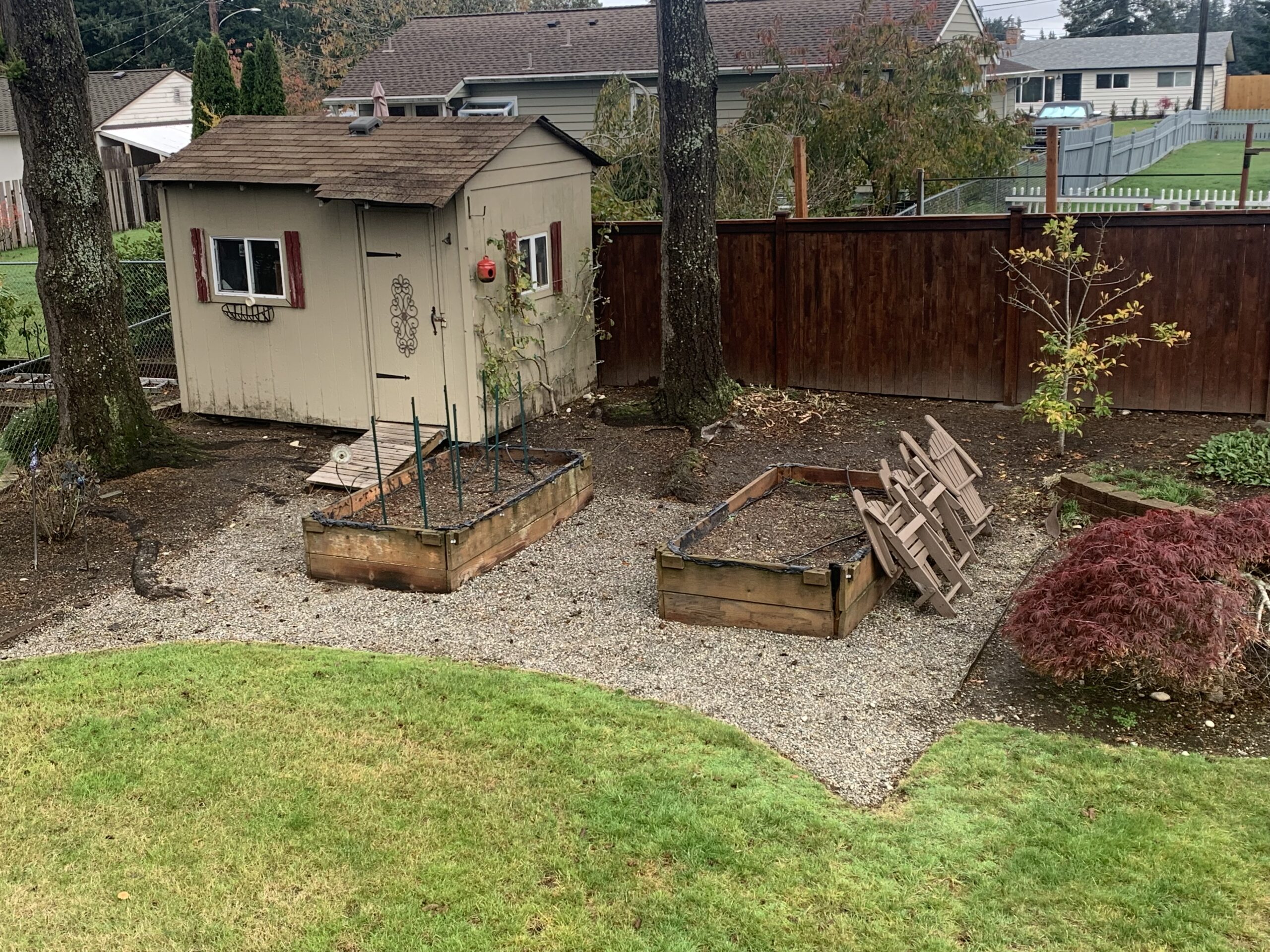After 20 gardening seasons, our wooden raised beds reached the end of their lifespan. While dismantling these old beds was a serious back-breaking chore, it opened up exciting possibilities for our urban backyard garden.

Rotting wood and dead soil clearly indicated that it was time to tackle this project. Our solution came in the form of the VegHerb 9-in-1 modular 17” high steel raised bed from Home Depot. This modern take on raised beds offers several advantages over traditional wooden structures. Modular steel raised beds are more durable, rot-resistant, and can be customized to fit various urban garden spaces. We bought two VegHerg modular steel raised garden beds and assembled them in the 3.5’ x 5.5’ configuration. These were really simple beds to assemble, I put these together in my living room and carried them outside when they were finished. All parts and tools were included.
The shift to steel beds addressed some of my environmental concerns. While wooden beds eventually decompose, contributing to soil organic matter, they also require replacement every few years or include chemicals in the treated wood that I prefer to avoid. Steel beds, on the other hand, offer a more sustainable long-term solution, reducing waste and the need for frequent renovations.
Now the soil. When emptying the old beds, I realized the soil was completely depleted. No worms or bugs in sight. While soil rejuvenation is possible with time and effort, I opted for a fresh start to give our new plants the best possible beginning. Because I was dismantling the beds completely, I was able to change the orientation of the beds to allow for the installation of a cattle panel trellis for my climbing veggies.
Steps for setting up the new raised garden beds
- ½” gopher wire installed under both beds to prevent moles from burrowing in the garden space.
- The modular raised garden beds were positioned on top of the gopher wire with a layer of cardboard.
- A layer of logs, twigs, leaves and grass from our yard waste pile followed.
- On top of the yard waste, a layer of compost was added. I used the Cedar Grove compost that is commonly available in my area.
- The final layer in the raised beds is Kellogg’s Organics Raised Bed and Potting Mix. This is my first time using this mix specially formulated for raised beds.

I’m excited about the possibilities that lie ahead. This garden makeover isn’t just about aesthetics; it’s about creating a more productive, sustainable, and adaptable urban garden. My goal is to move from a hobby garden to a backyard garden that produces bountiful harvests that can better support my family’s needs. Here we go! Looking forward to a rewarding summer in the garden.

